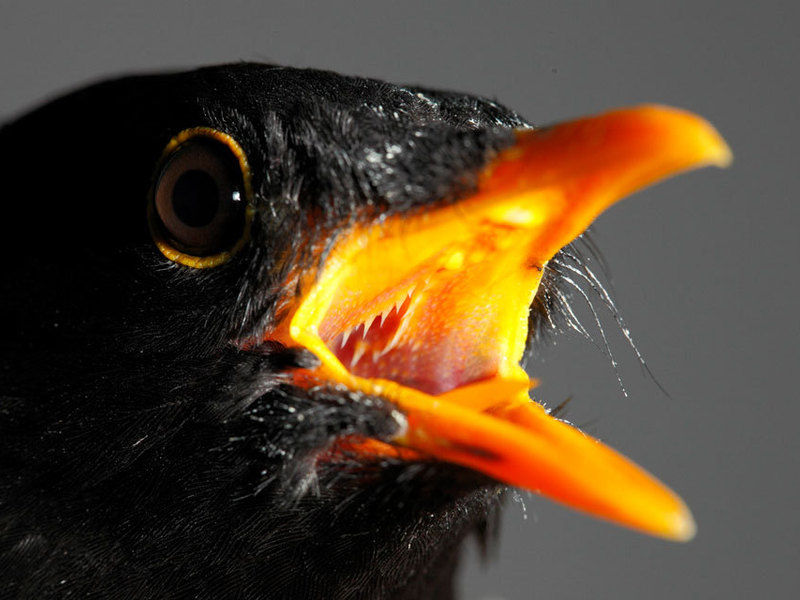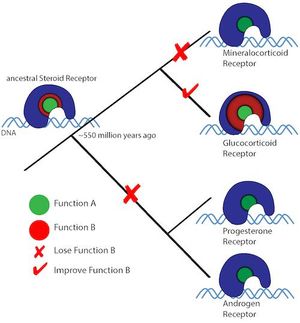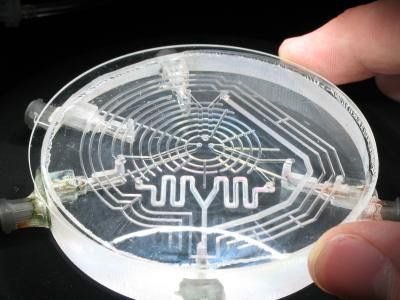Blackbirds in the spotlight
City birds that experience light at night are ready to breed earlier than their rural cousins
Street lamps, traffic lights and lighting from homes are causing a rise in our night-time light levels. For some time now, scientists have suspected that artificial light in our towns and cities at night could affect plants, animals and us, humans, too. Studies, however, that have tested this influence directly are few. Scientists from the Max Planck Institute for Ornithology in Radolfzell, Germany, recently investigated how light conditions in urban areas at night affect European blackbirds (Turdus merula). They found that animals exposed to low night-time light intensities, comparable to those found in cities, develop their reproductive system earlier: their testosterone levels rise and their testes mature earlier in the year. They also begin to sing and to moult earlier. The ever-present light pollution in cities may therefore exert a major influence on the seasonal rhythm of urban animals.

Towns and cities are the habitat of many species. The European blackbird (Turdus merula) is one of the most successful bird species to have colonised urban areas.
© Christian Ziegler
For many species, the seasonal change in day length is one of the most important environmental signals in controlling daytime rhythms (e.g. sleep-wake cycles) and seasonal ones (e.g. breeding season). People have long been exploiting this in areas such as agriculture: egg production in battery farming can be increased by altering the length of day with the help of artificial lighting.
City-dwelling animals are now not only exposed to natural light conditions, at times they also experience extreme levels of lighting as a result of artificial light. But what effect does artificial light have on the time-of-day and seasonal organisation of these urban animals? To answer this question, it is first crucial to know what light intensities the birds are actually experiencing at night. Therefore, a group of scientists working with Jesko Partecke from the Max Planck Institute for Ornithology tagged several urban blackbirds with light loggers to measure the average light intensities the birds were exposed to during the night. "The intensities were very low – 0.2 lux. That's just one-thirtieth of the light emanating from a typical street lamp," says the scientist.
Yet even such low values are sufficient to make the gonads of male blackbirds mature earlier. The scientists exposed wild-caught city and forest blackbirds to lighting intensities of 0.3 lux at night over a period of ten months. "The results were astonishing: The birds' gonads grew on average almost a month earlier than those of animals that slept in the dark," explains Partecke. The scientists also measured the level of testosterone in the birds' blood as another indicator of the animals' readiness for breeding. They found that the level rose earlier if the birds had been exposed to light at night. Song activity also got out of rhythm as a result of the low night-time light intensity; the animals began singing around one hour earlier. "All of this indicates that, from a seasonal perspective, the animals are ready to breed earlier," explains Partecke. However, animals living with night-time light not only exhibited an advanced onset of breeding, they also moulted towards the end of the breeding season a lot earlier than birds that spent their nights in the dark. "These findings are clear evidence that the artificial light we find in towns and cities can dramatically change the seasonal organisation of wild animals.
The scientists do not yet know what causes the advanced onset of breeding. It could be that the artificial night-time light has the effect of extending the day length for the animals. Or perhaps the light makes the birds continue hunting for food at night and put the additional energy into reproduction. Equally, the light may also influence the animals' metabolism and the altered metabolism might be what causes earlier gonad growth. Birds are more active in the daytime if they are exposed to light at night.
Nor is it clear whether the city blackbirds' advanced breeding offers an advantage or whether it is merely an unintended side effect of the lighting. "Blackbirds in the city are able to breed earlier in the year due to the artificial light and can produce more young in a year as a result," explains Partecke. "But only if the nestlings have access to enough food." Otherwise, the advanced onset of breeding could turn out to be an evolutionary disadvantage for blackbirds. With this in mind, the next aspect the scientists plan to study in their field research is the impact of night-time light in urban areas on the birds' fitness.




















































